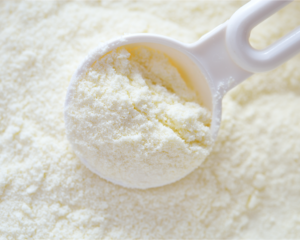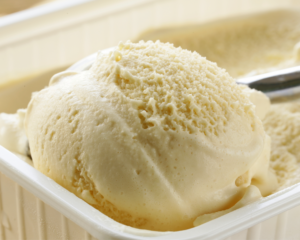Caseins
CALCIUM CASEINATE FUNCTIONS & PROPERTIES


Calcium caseinate is a casein product that is produced from treating curds with an alkali like calcium hydroxide. Calcium caseinate exists as a white to off-white powder. The general composition of calcium caseinate is 88% protein, 0.3% lactose, 4.7% ash, 1.5% fat, and 5.5% moisture, all of which vary slightly by manufacturer. Calcium caseinate is a partially water-soluble form of casein differing from acid casein and rennet casein which are not soluble in water. Sodium caseinate is more water soluble than calcium caseinate.


Skim milk that has been pasteurized is heated and coagulated by an acid or rennet leading to precipitation of the casein protein. Once the milk has coagulated, the whey is drained off and the curds are washed thoroughly with water. Diluted calcium hydroxide is added to the fresh casein curd creating a water-soluble product. The alkali treated casein curds are pressed, ground down thoroughly, and dried with heat which evaporates out the remainder of the water left in the curds to form a powder. Calcium caseinate can also be created from using a dry casein powder that is reconstituted in water and then adding calcium hydroxide and re-drying the product. Using fresh acid casein curds instead of dried casein powder is the preferred way of creating calcium caseinate as the flavor is preferable. Sodium caseinate and calcium caseinate manufacturing processes are similar, but calcium caseinate is requires more monitoring of the temperature and pH of the solution. As the temperature of the calcium caseinate solution increases, gelation may occur if the pH is less than 6.0.
Calcium caseinate is used in baked goods, confectionary products, processed cheeses, ice cream, whipped toppings, and dietary supplements. Calcium caseinate has high nutritional properties, improves the structure of finished goods, emulsifies, stabilizes fat, enhances foaming and foam stability, and is semi-soluble in water. Calcium caseinate also contains around 17% glutamic acid which can have many health benefits such as treating low blood sugar, improving memory and focus, boosting the immune system and treating intellectual disorders.


Calcium caseinate overall has a very neutral flavor profile. Calcium caseinate has been noted to taste papery, slightly sweet, and overall bland. Towards the end of a calcium caseinate powders’ shelf-life, the powder starts to have stronger cardboard and paper notes. The mouthfeel of calcium caseinate is thick and foamy with a slight astringency on the tongue.
Calcium caseinate has many functional properties that can be used to create a more desirable finished product. Calcium caseinate is heat stable making the protein suitable for addition for many applications that require heat treatment during processing. Due to its semi-soluble state in water, calcium caseinate makes a great coating to capsules to deliver nutraceuticals in the body. Calcium caseinate is a good emulsifier helping to create a cohesive product, especially in baked goods. Calcium caseinate, like sodium caseinate, can also improve the texture in beverages by increasing viscosity to give a preferable mouthfeel for consumption. Calcium caseinate addition can increase nutritional fortification in a finished good by adding protein.
